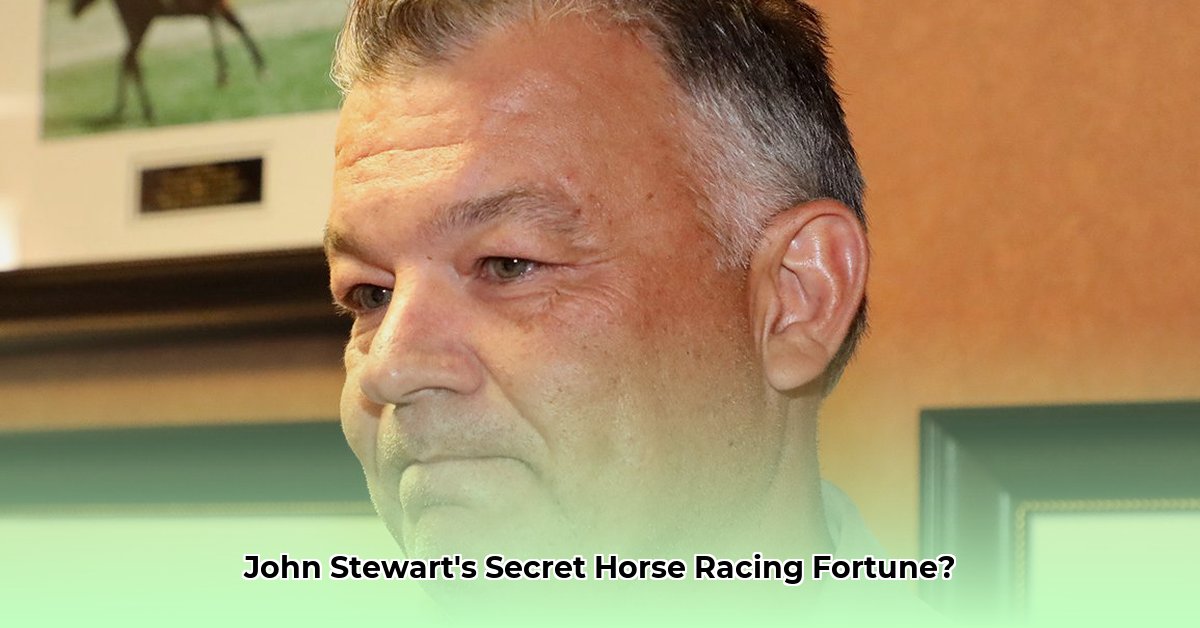
John Stewart, a prominent figure in the private equity world, has made a significant splash in the thoroughbred racing industry, transforming it with his multi-million dollar investments. His strategic acquisitions and ambitious vision are reshaping the landscape of horse racing, raising the question: What is the true extent of his horse racing net worth, and how did he build this empire? For more on high-profile investors, check out this resource.
A Strategic Spending Spree: Building a Bloodstock Dynasty
Stewart's recent purchases haven't gone unnoticed. His spending spree, exceeding $25 million in a single US sales season, has drawn considerable attention. This includes his acquisition of Shadwell’s Shadayid Stud, a pivotal move that further cemented his position within the industry. He’s not simply accumulating horses; he's meticulously selecting top-tier broodmares like Goodnight Olive, Pizza Bianca, and Didia, aiming to create what he describes as "the best broodmare band on the planet." This bold ambition suggests a long-term strategy far beyond immediate race wins.
But how much is this ambitious project costing him? While precise figures regarding his net worth tied to horse racing remain undisclosed, the scale of his investments underscores a commitment to substantial financial resources. His calculated risks demonstrate an understanding that building a successful bloodline takes time and substantial investment. This raises the pivotal question: Is this a calculated risk with enormous potential payoff, or a high-stakes gamble?
Beyond the Racetrack: A Generational Investment
Stewart's approach transcends the immediate thrill of the racetrack. He's focused on building a lasting legacy, a generational investment in thoroughbred breeding. This long-term perspective is a hallmark of his strategy, emphasizing the creation of lasting value through superior bloodlines. But inherent in such a long-term vision are significant risks.
The Inherent Risks in Thoroughbred Investing
Horse racing is fraught with unpredictability. Injuries, unforeseen illnesses, and even the capricious nature of breeding can quickly derail even the most meticulously planned strategies. This is not simply a financial investment; it's a gamble on the health and performance of living creatures, heightening risk substantially.
"The thoroughbred industry is inherently risky," notes Dr. Emily Carter, Veterinarian and Equine Specialist at the University of Kentucky. "Even with the best care and planning, unforeseen circumstances can significantly impact the return on investment." This underscores the need for comprehensive risk management.
Shaping the Future: Influencing Policy and Industry Standards
Stewart's influence extends beyond his individual acquisitions. His outspoken advocacy for changes in tax policies affecting international buyers, particularly from Japan, displays a proactive approach aimed at influencing the industry’s regulatory landscape. This assertive strategy indicates a desire to not only participate in, but directly shape, the future of international thoroughbred sales. This begs the question: Will his actions significantly alter the dynamics of the global thoroughbred market? The potential impact is substantial.
Comparing Strategies: A Unique Approach to Thoroughbred Investment
Stewart's model resembles that of established giants like Coolmore Stud, but with a distinct focus: building a world-class broodmare operation. This concentrated strategy presents both considerable opportunities and significant challenges. His determination to compete with established industry leaders is evident in his actions. His success, however, will depend on numerous factors, including the performance of his broodmares and the overall health of the horse racing industry.
The Future of Stewart’s Horse Racing Fortune: A High-Stakes Gamble
The ultimate success of Stewart's venture remains uncertain. His financial trajectory will depend on several interconnected variables: the breeding performance of his mares, the success of their offspring on the racetrack, and the overall economic health of the horse racing industry. This is a high-stakes gamble, with the potential for extraordinary returns, but also the prospect of significant losses. His net worth, tied to this endeavor, remains largely speculative, yet the impact is undeniable.
Analyzing Stakeholders: Winners and Losers in Stewart's Gamble
| Stakeholder | Short-Term Impact | Long-Term Impact |
|---|---|---|
| John Stewart/Resolute Racing | Consolidation of assets; initial breeding results | Potential for market dominance; production of high-value offspring |
| Other Breeders/Owners | Increased competition; market adjustments needed | Potential for consolidation or collaborative ventures |
| Regulatory Bodies | Monitoring market changes; potential policy revisions | Policy shifts influenced by Stewart's actions and lobbying |
| International Buyers (e.g., Japan) | Anticipation of potential policy changes | Altered market access and investment approaches |
The Bottom Line: A Story Worth Watching
John Stewart’s investment in thoroughbred horse racing represents a significant and calculated gamble. While the precise extent of his net worth related to the industry remains unknown, the scale and ambition of his undertaking are undeniable. Whether this ambitious project yields a lasting dynasty or proves a risky venture remains to be seen. It's a story of immense financial risk and potential, and one that will continue to unfold in the years to come.